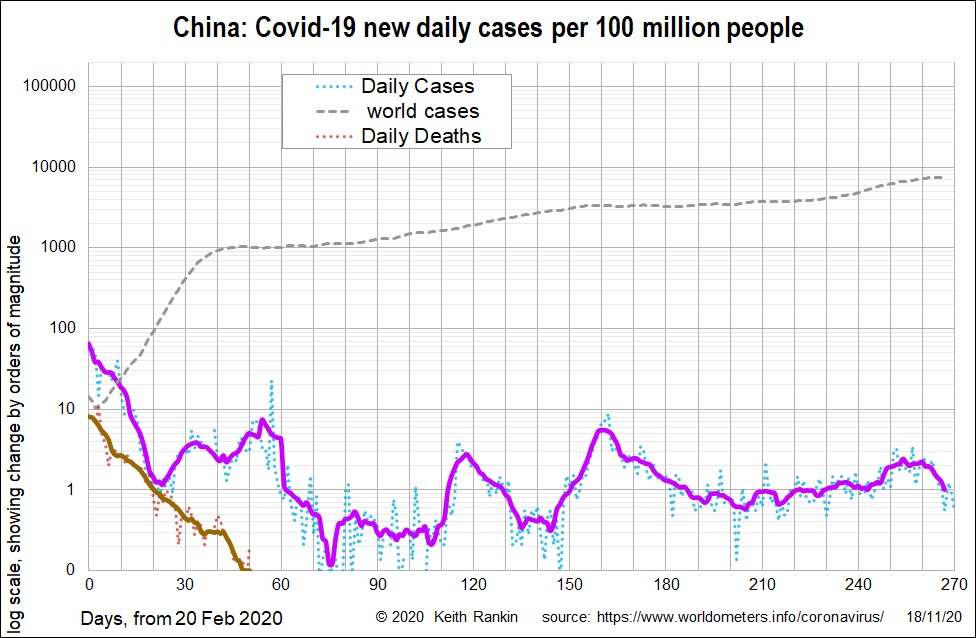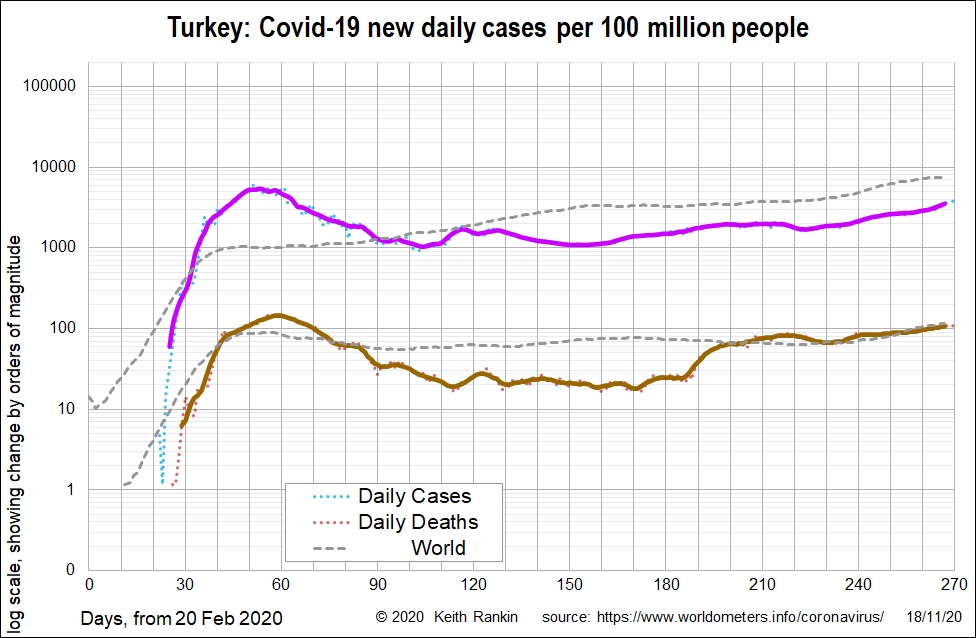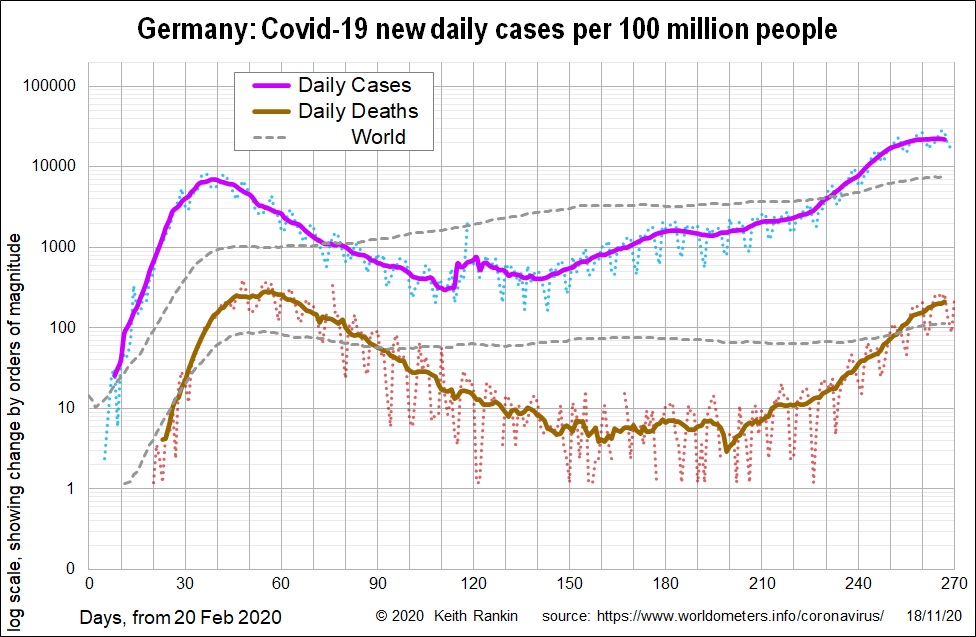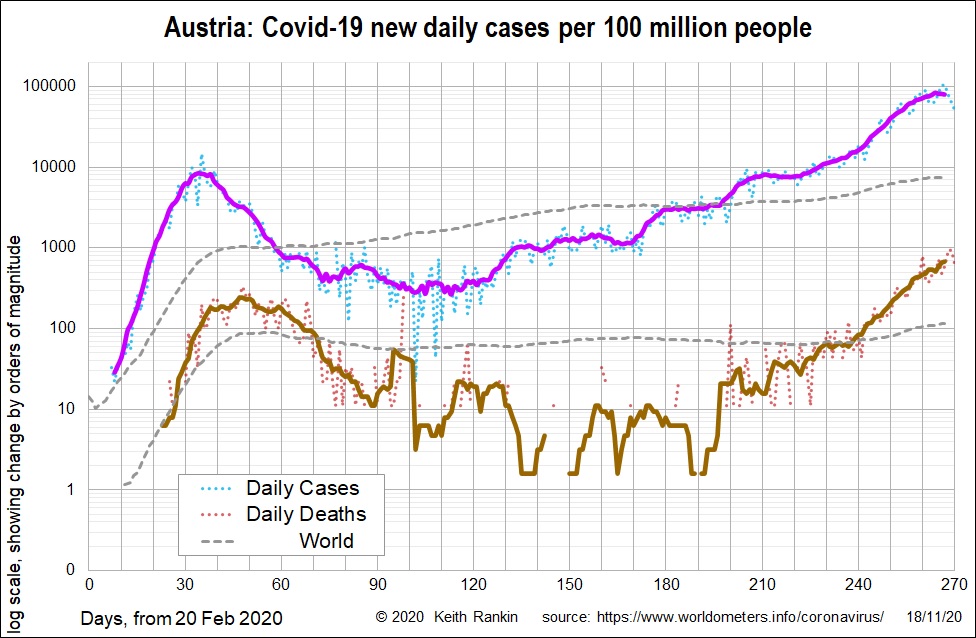Analysis by Keith Rankin.
Today I have chosen six countries, each with Covid19 case experiences over the last three weeks (days 250 to 270) that are orders of magnitude apart. A country with 1,000 daily cases per 100 million people is classed as magnitude three; that’s three zeros after the ‘one’. A country with 1 daily case per 100 million people is classed as magnitude zero; that’s zero zeros after the ‘one’.
Covid19 orders of magnitude are like the Richter Scale for earthquakes. For example, a magnitude five earthquake is ten times stronger than a magnitude four.






China, with about 1 daily case per 100,000 people, represents the benchmark of Covid19 success. Of course, China was not always at magnitude zero, but it has been for most of the year. China has ‘eliminated’ but not ‘eradicated’ the virus.
Australia and New Zealand represent magnitude one. Both countries have more border incursions than does China, per head of population, reflecting a historically higher (per capita) level of international mobility. Australia had a major winter outbreak, however, an outbreak that would not have happened in China.
South Korea – at magnitude two, about 100 daily cases per 100 million people – is more typical of East Asia, with recurrent outbreaks which are managed by speedy government responses and comprehensive contact tracing. The death rate from Covid19 in South Korea is about the same as the case rate in China, about 1 per 100 million people.
Turkey best represents magnitude three, over 1000 times worse than China, yet still below the world average. Magnitude three is rare among economically developed countries; in November, most such countries either are in covid-control (eg Australia) or, more likely, are out of covid-control. Turkey has a well-established pattern of semi-control.
Germany represents magnitude four, with a daily death rate similar to South Korea’s daily case rate. Germany has suffered four months now of exponential growth of case numbers, and is only now taking (still limited) steps to address its Covid19 problem. Norway and Denmark are also at magnitude four. What distinguishes Germany from the magnitude five countries is that its rate of exponential growth has been slower; its test positivity rates have been lower. Canada is also at magnitude four, though Manitoba (think Winnipeg) – barely touched by Covid19 in April – is at magnitude 4.5 (ie five times worse than the national average).
The United Kingdom, United States, Spain, and Portugal are – like Manitoba – at magnitude 4.5. Sweden is also currently at 4.5.
Austria represents magnitude five, a few days ago touching 100,000 daily cases per 100 million people. This is 100,000 times worse than China, and Austria now has a death rate approaching Turkey’s case rate. Other countries that have exceeded, touched, or approached 100,000 daily cases per 100 million people in November 2020 include Belgium, Switzerland, Czechia, France, Netherlands, and Italy.
Magnitude five cities include Geneva – home to the World Health Organisation, and the epitome of a first-world city – and Brussels, home to the European Parliament and principal home to the European Union bureaucracy. And Paris, Vienna, Prague.
We cannot rule out the possibility that some places will reach magnitude six this northern winter; that would be a million times worse than China.
Finally, we should note that, in late July and early August, Australia (now magnitude one) had higher case numbers per capita than did Austria, which is our magnitude five example. Fortunes can change rapidly. Even New Zealand – next winter – could be at magnitude four or five; especially now that the New Zealand government is in the process of shifting away from the successful ‘levels’ approach, moving instead towards ‘the economy-first approach’, which, as a smokescreen for that shift, ’tilts at windmills’ by mandating mask use for public transport commuters.







